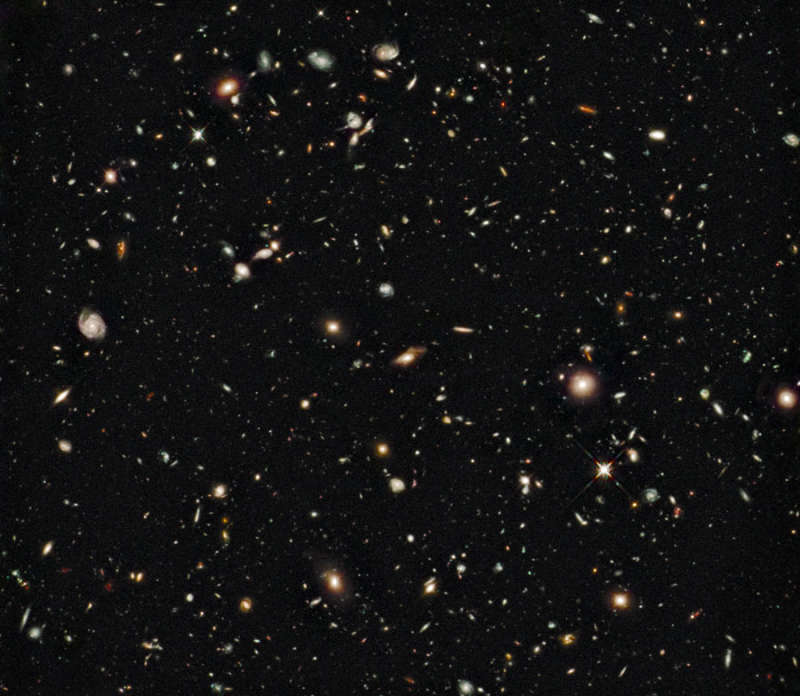
|
Credit & Copyright: NASA,
ESA,
G. Illingworth
(UCO/Lick &
UCSC),
R. Bouwens
(UCO/Lick &
Leiden U.), & the
HUDF09 Team
Explanation:
When did galaxies form?
To help find out, the deepest
near-infrared image of the sky ever has been taken of the
same field
as the optical-light
Hubble Ultra Deep Field (HUDF) in 2004.
The new image was taken this summer by the newly installed
Wide Field Camera 3 on the
refurbished Hubble Space Telescope.
Faint red smudges identified on the
above image likely surpass
redshift 8 in distance.
These galaxies
therefore likely existed when the
universe was only a few percent of its
present age,
and may well be members of the
first class of galaxies.
Some large modern
galaxies
make a colorful foreground to the distant galaxies.
Analyses by the
HUDF09 team
indicate that at least some of these
early galaxies
had very little interstellar dust.
This early class
of low luminosity galaxies likely contained
energetic stars emitting light that
transformed much of the remaining
normal matter in the universe from a cold gas to a hot
ionized plasma.
|
January February March April May June July August September October November December |
| ||||||||||||||||||||||||||||||||||||||||||||||||
NASA Web Site Statements, Warnings, and Disclaimers
NASA Official: Jay Norris. Specific rights apply.
A service of: LHEA at NASA / GSFC
& Michigan Tech. U.
Based on Astronomy Picture
Of the Day
Publications with keywords: infrared - galaxy formation - Hubble Deep Field - early universe
Publications with words: infrared - galaxy formation - Hubble Deep Field - early universe
See also:
- APOD: 2025 March 2 Á The Hubble Ultra Deep Field in Light and Sound
- APOD: 2025 February 23 Á Saturn in Infrared from Cassini
- APOD: 2024 June 24 Á JADES GS z14 0: A New Farthest Object
- APOD: 2023 May 31 Á Simulation: A Disk Galaxy Forms
- SOFIA s Southern Lights
- Saturn in Infrared from Cassini
- The Hubble Ultra Deep Field in Light and Sound
